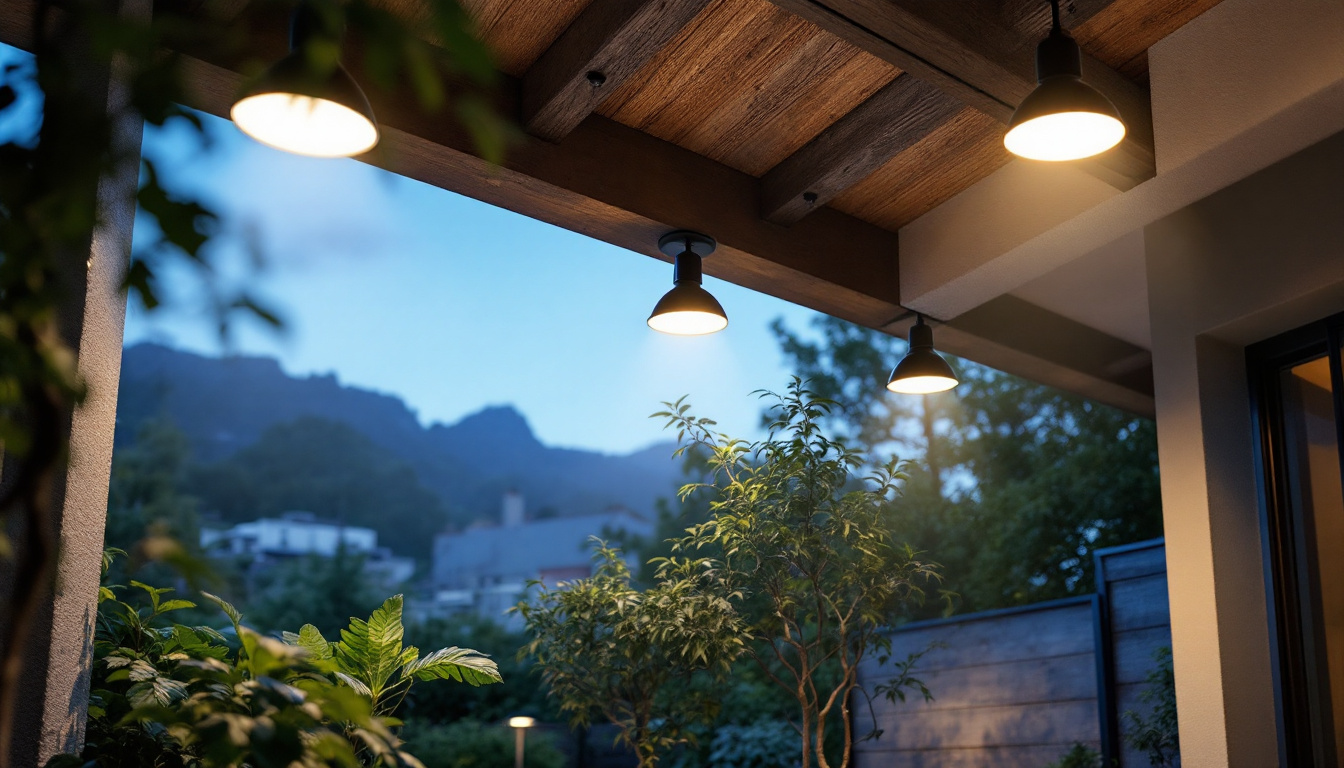
As the demand for energy-efficient lighting solutions continues to rise, lighting contractors are increasingly turning to LED can light conversions. This transition not only meets customer expectations for sustainability but also enhances the overall quality of lighting in residential and commercial spaces. This article explores proven methods for effectively converting traditional can lights to LED fixtures, providing contractors with the knowledge needed to succeed in this evolving market.
Before diving into the conversion methods, it is essential to understand why LED lighting has become the preferred choice for many contractors. The advantages of LED technology extend beyond mere energy savings. As the demand for sustainable and efficient lighting solutions grows, more clients are recognizing the long-term benefits of making the switch to LED. This shift not only aligns with eco-friendly practices but also enhances the overall quality of light in various settings.
LED lights consume significantly less energy compared to incandescent or halogen bulbs. This efficiency translates into lower electricity bills for clients, making LED conversions an attractive option for homeowners and businesses alike. In fact, LEDs can use up to 80% less energy than traditional lighting solutions, providing a compelling reason for clients to consider a switch. Furthermore, the reduced energy consumption contributes to a smaller carbon footprint, aligning with global sustainability goals. As more people become environmentally conscious, the appeal of LED lighting continues to grow, encouraging a shift toward greener alternatives.
Another significant benefit of LED lights is their impressive lifespan. While traditional bulbs may last around 1,000 hours, LEDs can last anywhere from 15,000 to 50,000 hours or more. This longevity not only reduces the frequency of replacements but also minimizes maintenance costs for clients. Additionally, LEDs are more durable, being resistant to shocks and vibrations, which is particularly advantageous in high-traffic areas. This durability is especially beneficial in commercial settings where lighting fixtures are subjected to more wear and tear. The longer lifespan of LEDs also means less waste, contributing to a more sustainable approach to lighting.
LEDs provide superior light quality, offering better color rendering and brightness. This improvement enhances the aesthetics of any space, making it more inviting and functional. With options for adjustable color temperatures, contractors can tailor the lighting to meet specific client needs, whether for a cozy home environment or a bright, professional workspace. Moreover, LEDs can be designed to emit light in a specific direction, reducing the need for reflectors and diffusers that can trap light and reduce efficiency. This directional lighting capability not only enhances visibility but also allows for more creative and effective lighting designs, making it easier to highlight architectural features or artwork in a space.
In addition to these benefits, LED technology is evolving rapidly, with innovations such as smart lighting systems that can be controlled remotely or programmed for specific tasks. This integration of technology not only adds convenience but also allows for even greater energy savings through automated dimming and scheduling features. As smart homes and buildings become more prevalent, the role of LED lighting will only continue to expand, making it a forward-thinking choice for any renovation or new construction project.
Successful LED can light conversion begins with thorough preparation. Understanding the existing fixtures and the specific requirements of the space is crucial for a smooth transition.
Before starting the conversion process, contractors should assess the current can light fixtures. This includes examining the type of bulbs in use, the wattage, and the overall condition of the fixtures. Knowing these details helps in selecting the appropriate LED replacements and ensures compatibility with the existing electrical system. Furthermore, it’s important to check for any signs of wear or damage in the fixtures themselves, such as rust or corrosion, which could affect the performance of the new LED bulbs. A comprehensive assessment can also reveal whether any additional upgrades, such as new housings or trims, may be necessary to optimize the lighting quality and aesthetic appeal of the space.
Contractors should also calculate potential energy savings for clients. By comparing the wattage of existing bulbs with the wattage of the proposed LED replacements, contractors can provide clients with a clear picture of the financial benefits over time. This data can be a persuasive tool in discussions with clients, emphasizing the long-term value of the conversion. Additionally, it may be beneficial to factor in maintenance costs associated with traditional lighting, as LEDs typically have a longer lifespan and require less frequent replacement. Presenting a detailed analysis of both energy and maintenance savings can significantly enhance the client’s understanding of the investment, making it easier for them to see the overall benefits of transitioning to LED technology.
With a plethora of LED products available on the market, selecting the right options for each project is vital. Contractors should consider factors such as lumens, color temperature, and beam angle when choosing LED can lights. Additionally, opting for products from reputable manufacturers ensures quality and reliability, which is essential for maintaining client satisfaction. It’s also important to take into account the intended use of the space; for example, warmer color temperatures may be more suitable for residential settings to create a cozy atmosphere, while cooler temperatures can enhance productivity in commercial environments. Moreover, exploring dimmable LED options can provide clients with greater flexibility in lighting control, allowing them to adjust brightness levels according to their needs and preferences, further enhancing the functionality of the space.
The actual conversion process can vary depending on the specific fixtures and products chosen. However, a general step-by-step guide can help contractors navigate the conversion effectively.
Safety is paramount in any electrical work. Before beginning the conversion, contractors must ensure that the power to the can lights is turned off at the circuit breaker. This step prevents any accidents and ensures a safe working environment.
Once the power is off, contractors can proceed to remove the existing bulbs and fixtures. This process may involve unscrewing the bulbs and, in some cases, removing the entire can housing if it is not compatible with the new LED system. Care should be taken to handle all components gently to avoid damage.
Depending on the chosen LED solution, contractors can either install retrofit kits or direct replacement bulbs. Retrofit kits typically include a new LED module and necessary hardware, while replacement bulbs can be installed directly into the existing fixtures. It is essential to follow the manufacturer’s instructions for installation to ensure optimal performance and safety.
After installation, contractors should turn the power back on and test the new LED lights to ensure they are functioning correctly. This step allows for immediate troubleshooting if any issues arise, ensuring that clients receive a fully operational lighting solution.
While LED can light conversions are generally straightforward, contractors may encounter challenges during the process. Being prepared for these potential issues can help maintain project timelines and client satisfaction.
One common challenge is compatibility between existing fixtures and new LED products. Not all can lights are designed to accommodate LED technology, which can lead to flickering or inadequate lighting. To mitigate this issue, contractors should research the specifications of both the existing fixtures and the LED products being considered. In some cases, using a compatible LED driver can resolve these issues.
Clients often desire dimming capabilities in their lighting systems. However, not all LED products are compatible with existing dimmer switches. To ensure proper dimming functionality, contractors should recommend LED-compatible dimmers when converting to LED can lights. This adjustment not only enhances the user experience but also prevents flickering and extends the lifespan of the LED bulbs.
Clients may have specific preferences regarding color temperature, which can affect the overall ambiance of a space. While LEDs are available in various color temperatures, it is crucial for contractors to discuss these options with clients before making a selection. Providing samples or demonstrations can help clients visualize the impact of different color temperatures in their environment.
Once the conversion is complete, contractors should not overlook the importance of post-conversion considerations. These steps can enhance client satisfaction and encourage future referrals.
Educating clients about their new LED lighting is essential for maximizing its benefits. Contractors should explain how to operate and maintain the new fixtures, including any specific care instructions. Providing clients with information about the expected lifespan and energy savings can also reinforce the value of their investment.
Offering follow-up services can set contractors apart from competitors. Scheduling a follow-up visit a few weeks after the conversion allows contractors to address any concerns and ensure that clients are satisfied with their new lighting. This proactive approach can lead to positive reviews and word-of-mouth referrals.
Soliciting feedback from clients can provide valuable insights into the conversion process and overall satisfaction. Contractors should encourage clients to share their experiences, which can help identify areas for improvement and enhance future projects. Additionally, positive testimonials can be used in marketing efforts to attract new clients.
LED can light conversion presents a significant opportunity for lighting contractors to meet the growing demand for energy-efficient lighting solutions. By understanding the benefits of LED technology, preparing adequately, and following a structured conversion process, contractors can provide exceptional service to their clients. Addressing common challenges and offering post-conversion support further enhances the client experience, ensuring satisfaction and fostering long-term relationships.
As the lighting industry continues to evolve, staying informed about the latest trends and technologies will be crucial for contractors. Embracing LED can light conversions not only aligns with sustainability goals but also positions contractors as leaders in the field, ready to meet the needs of a changing market.
Ready to elevate your lighting projects with the efficiency and quality of LED can lights? At LumenWholesale, we support your commitment to excellence by providing spec-grade lighting products at unbeatable wholesale prices. Say goodbye to local distributor markups and hello to a vast selection of industry-standard, reliable lighting solutions. With free shipping on bulk orders, LumenWholesale is your go-to source for premium lighting without the hidden fees. Make your next project shine brighter while maximizing value and convenience. Discover the best in wholesale lighting by visiting Wholesale Lighting at the Best Value today.

Discover the ultimate guide for lighting contractors on recessed LED cans.

Discover how plug-in outlet switches are transforming the financial landscape for lighting contractors.

Discover the common pitfalls lighting contractors face with outdoor overhead lighting projects.

Discover essential tips from lighting contractors on maximizing the efficiency and lifespan of LED fluorescent lights.